Comments / Questions (46)
![]() Annie wrote:
Annie wrote:
Bonjour. Par quel point peut-on remplacer le point mousse sur ce modèle. Merci
27.08.2025 - 14:13DROPS Design answered:
Bonjour Annie, vous pouvez probablement le remplacer par un autre de votre choix, pensez à bien vérifier les bonnes hauteurs pour que tout corresponde. Bon tricot!
28.08.2025 - 18:47
![]() Saurel Nadine wrote:
Saurel Nadine wrote:
Bonjour, Je tricoté ce modèle en 3 XL. Concernant le devant gauche, je ne comprends pas les diminution pour les emmanchures. IL est noté diminuer vomie pour le dos, mais il n'y a pas le lemf nombre de mailles pour le dos biensur. Et il y a 4 séries de diminution differentes. Merci de me donner l'es explications exactes pour les diminutions d'emmanchures des devant. Merci d'avance.
04.05.2025 - 12:36DROPS Design answered:
Bonjour Mme Saurel, pour le dos, vous avez rabattu de chaque côté tous les 2 rangs: 2 x 4 m puis 3 x 3 m puis 3 x 2 m et 6 x 1 m (soit 29 m de chaque côté); pour le devant gauche, vous allez rabattre en début de rang sur l'endroit: 2 x 4 m puis 3 x 3 m puis 3 x 2 m et 6 x 1 m soit 87 m -(8-9-6-6)= il reste 58 mailles. Bon tricot!
05.05.2025 - 08:06
![]() Martine wrote:
Martine wrote:
Het aantal steken voor de hals is in het achterpand en in de som van beide voorpanden min de 9 steken overlapping door het biesje, niet gelijk. Is dat de bedoeling of waar tel ik verkeerd?
11.04.2022 - 22:54DROPS Design answered:
Dag Martine,
Het voorpand is inderdaad 8 steken breder. Dit zie je wel vaker bij vesten, je kunt gewoon verder breien met het patroon.
14.04.2022 - 11:49
![]() Lise Leblanc wrote:
Lise Leblanc wrote:
Bonjour, je fais ce modèle pour ma belle-fille, mais elle veut une manche longue. Combien de centimètre dois-je tricoter avant de diminuer l'emmanchure pour la grandeur small. Est-ce que 42 cm c'est suffisant?
27.03.2021 - 22:00DROPS Design answered:
Bonjour Mme Leblanc, le plus simple sera de vous inspirer d'un modèle similaire avec manches longues et de même tension. Aidez-vous du schéma des mesures si besoin - cf cette leçon. Bon tricot!
06.04.2021 - 07:50
![]() Francesca wrote:
Francesca wrote:
Buonasera mi scusi se io dovessi lavorare con la baby merinos questo modello eseguo le stesse maglie da avviare come se usassi l alpaca usata in questo modello?
28.04.2020 - 22:21DROPS Design answered:
Buongiorno Francesca, Baby Merino appartiene allo stesso gruppo filati di Alpaca, gruppo filati A. Può lavorare seguendo le stesse indicazioni ma si ricordi di controllare che il suo campione corrisponda a quello indicato prima di iniziare a lavorare. Buon lavoro!!
29.04.2020 - 08:54
![]() Katie Ström wrote:
Katie Ström wrote:
Hej. Jag vill göra koftan men tål inte ull,kliar. vilken garn kan du rekomendera till mig då? MVH Katie
19.12.2019 - 09:41DROPS Design answered:
Hej Katie, Koftan kan med fördel stickas i DROPS Safran. Lycka till :)
15.01.2020 - 12:30
![]() Stefania wrote:
Stefania wrote:
Buongiorno! Ho dei dubbi sul vivagno. Nel davanti lato interno. il vivagno va aggiunto alle otto maglie legaccio del bordo? Praticamente avrò un bordo di nove maglie legaccio ma per l'asola partirò a contare dalla seconda maglia? Invece per il vivagno laterale (sia per il davanti che per il dietro) è meglio lavorarlo dritto su dritto e rovescio su rovescio quando faccio la maglia rasata o sempre dritto? Grazie.
02.08.2019 - 10:19DROPS Design answered:
Buongiorno Stefania, la maglia di vivagno è solo laterale, verso il centro davanti ha solo le 8 maglie del bordo. Può lavorare il vivagno a maglia legaccio, le servirà poi per la cucitura. Buon lavoro!
02.08.2019 - 15:50
![]() De Clercq Carine wrote:
De Clercq Carine wrote:
Beste, in dit patroon spreken jullie van een eerste mindering op 6 cm . Bedoelen jullie vanaf de boordsteek of vanaf de eerste naald boven de ribbelboord ?
03.07.2019 - 20:46DROPS Design answered:
Dag Carine,
Hiermee wordt vanaf het begin, dus vanaf de opzetnaald bedoeld.
08.07.2019 - 11:22
![]() Natalie wrote:
Natalie wrote:
Skal siste maske mot stolpe være glattstrikk, eller skal den strikkes vrangt på alle pinner
15.01.2019 - 16:47DROPS Design answered:
Hej Natalie, de 8 stolpemasker skal strikkes i riller, alle de andre strikkes i glatstrik ifølge opskriften. God fornøjelse!
17.01.2019 - 08:34
![]() Gunilla wrote:
Gunilla wrote:
Kan Modell Z-415 ändras till en jumper och hur gör jag
03.01.2019 - 08:34DROPS Design answered:
Hei Gunilla. Du kan gjerne gjøre denne om til en genser om du vil: strikk høyre og venstre forstykke sammen (isteden for å strikke dem hver for seg), og fjern stolpemaskene. Følg ellers oppskriften som anvist. God fornøyelse.
03.01.2019 - 09:19
Quiet Lake#quietlakecardigan |
|
|
|
|
DROPS jacket with 3/4 sleeves in ”Alpaca”. Size S - XXXL.
DROPS 111-18 |
|
|
GARTER ST (back and forth on needle): K all rows. BUTTONHOLES: Make buttonholes on right front band. 1 buttonhole = bind off 4th and 5th st from mid front and cast on 2 new sts on return row. Make buttonholes when piece measures: SIZE S: 5, 13, 20, 28, 35 and 43 cm / 2",5⅛",8",11",13¾" and 17". SIZE M: 5, 13, 21, 29, 37 and 45 cm / 2",5⅛",8¼",11⅜",14½" and 17¾" SIZE L: 6, 14, 22, 30, 38 and 46 cm / 2⅜",5½",8¾",11¾",15" and 18". SIZE XL: 6, 15, 23, 32, 40 and 48 cm / 2⅜",6",9",12½",15 ¾" and 19". SIZE XXL: 6, 15, 24, 33, 41 and 49 cm / 2⅜",6",9½",13",16⅛" and 19¼", SIZE XXXL: 6, 15, 24, 33, 42 and 51 cm / 2⅜",6",9½",13",16½" and 20", NOTE: The last buttonhole is made on neckline. ---------------------------------------------------------- ---------------------------------------------------------- BACK PIECE: Worked back and forth on needle. Cast on 112-122-134-146-158-170 sts (includes 1 edge st each side) on needle size 3 mm / US 2or3 with Alpaca. Work 6 rows garter st – see above – and continue in stockinette st. REMEMBER THE KNITTING GAUGE! When piece measures 6 cm / 2⅜" dec 1 st on each side and repeat the dec on every 5 cm / 2" a total of 6 times = 100-110-122-134-146-158 sts. When piece measures 38-39-40-41-42-43 cm / 15-15¼"-15¾"-16⅛"-16½" bind off for armhole each side at the beg of every row: 4 sts 1-1-1-1-2-2 times, 3 sts 0-0-1-2-2-3 times, 2 sts 0-2-2-3-3-3 times and 1 st 3-3-4-4-5-6 times = 86-88-92-94-96-100 sts. When piece measures 42-44-46-48-50-52 cm / 16½"-17¼"-18"-19"-19¾"-20½" dec 4 sts evenly on row = 82-84-88-90-92-96 sts. Now complete piece in garter st. When piece measures 54-56-58-60-62-64 cm / 21¼"-22"-22¾"-23⅝"-24⅜"-25¼" bind off the middle 38 sts for neck and complete each shoulder separately. Bind off on every row from neckline: 1 st 2 times = 20-21-23-24-25-27 sts left on shoulder. Bind off when piece measures 56-58-60-62-64-66 cm / 22"-22¾"-23⅝"-24⅜"-25¼"-26". LEFT FRONT PIECE: Worked back and forth on needle. Cast on 64-69-75-81-87-93 sts (includes 1 edge st at the side and 8 front band sts towards mid front) on needle size 3 mm / US 2or3 with Alpaca. Work 6 rows garter st and continue in stockinette st with 8 front band sts towards mid front in garter st. When piece measures 6 cm / 2⅜" dec at the side as described for back piece = 58-63-69-75-81-87 sts. When piece measures 38-39-40-41-42-43 cm / 15-15¼"-15¾"-16⅛"-16½" bind off for armhole at the side as described for back piece = 51-52-54-55-56-58 sts. When piece measures 42-44-46-48-50-52 cm / 16½"-17¼"-18"-19"-19¾"-20½" dec 3 sts evenly on row (do not dec on front band) = 48-49-51-52-53-55 sts. Now complete piece in garter st on all sts, but to mark the front band P the 9th st from mid front on every row. When piece measures 50-52-54-55-57-59 cm / 19¾"-20½"-21¼"-21⅝"-22½"-23¼" slip 16 sts towards mid front on a stitch holder for neck and bind off to shape the neckline at the beg of every row from mid front: 2 sts 3 times and 1 st 6 times = 20-21-23-24-25-27 sts left on shoulder. Bind off when piece measures 56-58-60-62-64-66 cm / 22"-22¾"-23⅝"-24⅜"-25¼"-26". RIGHT FRONT PIECE: Like left front piece, but mirrored, and remember BUTTONHOLES – see above. SLEEVE: Worked back and forth on needle. Cast on 58-60-62-64-66-68 sts (includes 1 edge st each side) on needle size 3 mm / US 2or3 with Alpaca. Work 6 rows garter st and continue in stockinette st. When piece measures 5 cm / 2" inc 1 st each side, and repeat the inc on every 10-8-7-6-5-4 row a total of 10-12-13-15-16-18 times = 78-84-88-94-98-104 sts. When piece measures 35-34-32-31-29-28 cm / 13¾"-13⅜"-12½"-12¼"-11⅜"-11" – less for the larger sizes because of longer sleeve cap and wider shoulder - bind off for sleeve cap each side at the beg of every row: 4 sts 1 time, 2 sts 3 times, 1 st 5-6-10-12-15-17 times, then 2 sts each side until piece measures 41 cm / 16⅛", now bind off 3 sts each side 1 time and bind off remaining sts. Piece measures approx 42 cm / 16½". ASSEMBLY: Sew shoulder seams. NECKLINE: Pick up approx 110 to 120 sts round neckline (incl sts on stitch holders mid front) on needle size 3 mm / US 2or3 with Alpaca. K 5 rows, AT THE SAME TIME on row 2 make 1 buttonhole in line with the others on front band. Bind off loosely after 5 rows. FURTHER ASSEMBLY: Set in sleeves. Sew side and sleeve seams inside 1 edge st. Sew on buttons. |
|
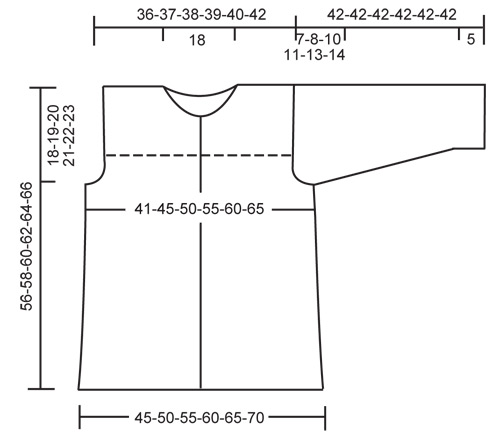 |
|
Have you finished this pattern?Tag your pictures with #dropspattern #quietlakecardigan or submit them to the #dropsfan gallery. Do you need help with this pattern?You'll find 19 tutorial videos, a Comments/Questions area and more by visiting the pattern on garnstudio.com. © 1982-2025 DROPS Design A/S. We reserve all rights. This document, including all its sub-sections, has copyrights. Read more about what you can do with our patterns at the bottom of each pattern on our site. |




















































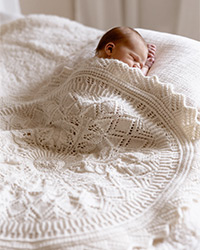
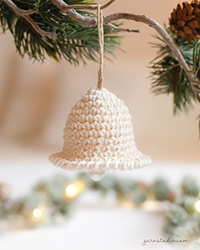
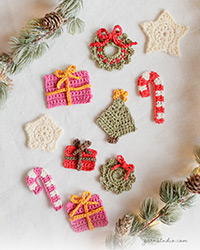
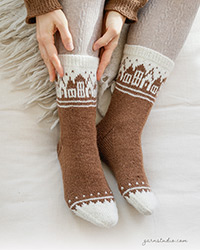

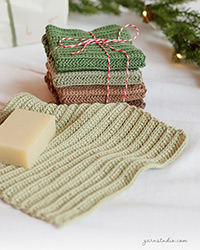
Post a comment to pattern DROPS 111-18
We would love to hear what you have to say about this pattern!
If you want to leave a question, please make sure you select the correct category in the form below, to speed up the answering process. Required fields are marked *.